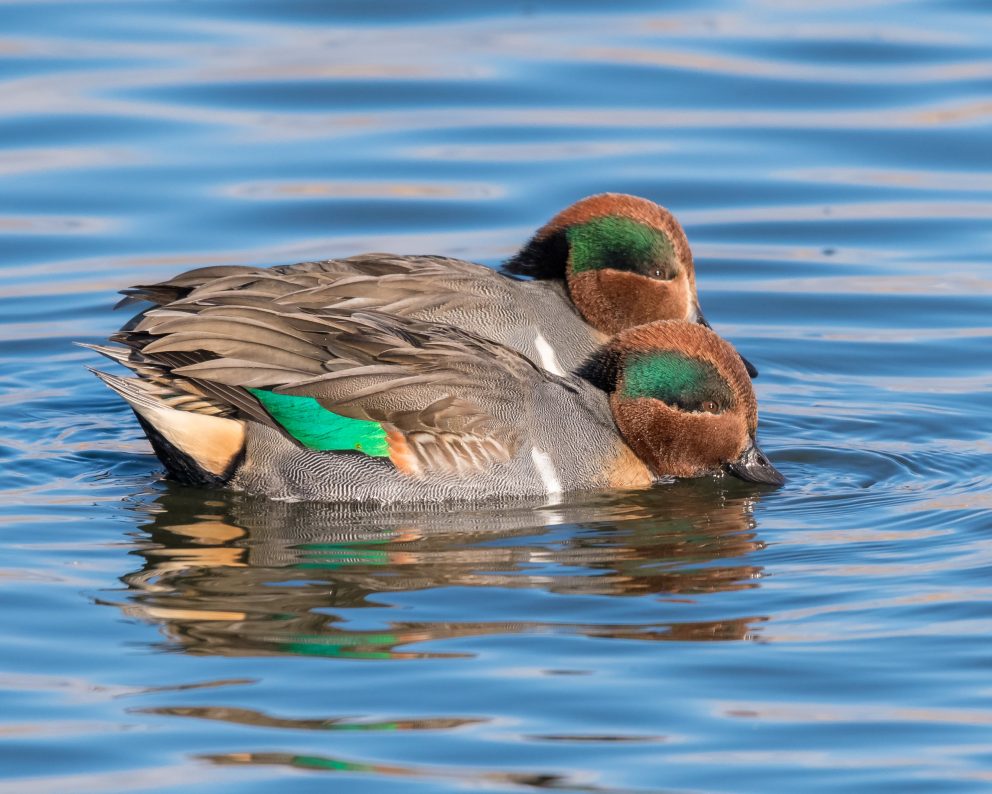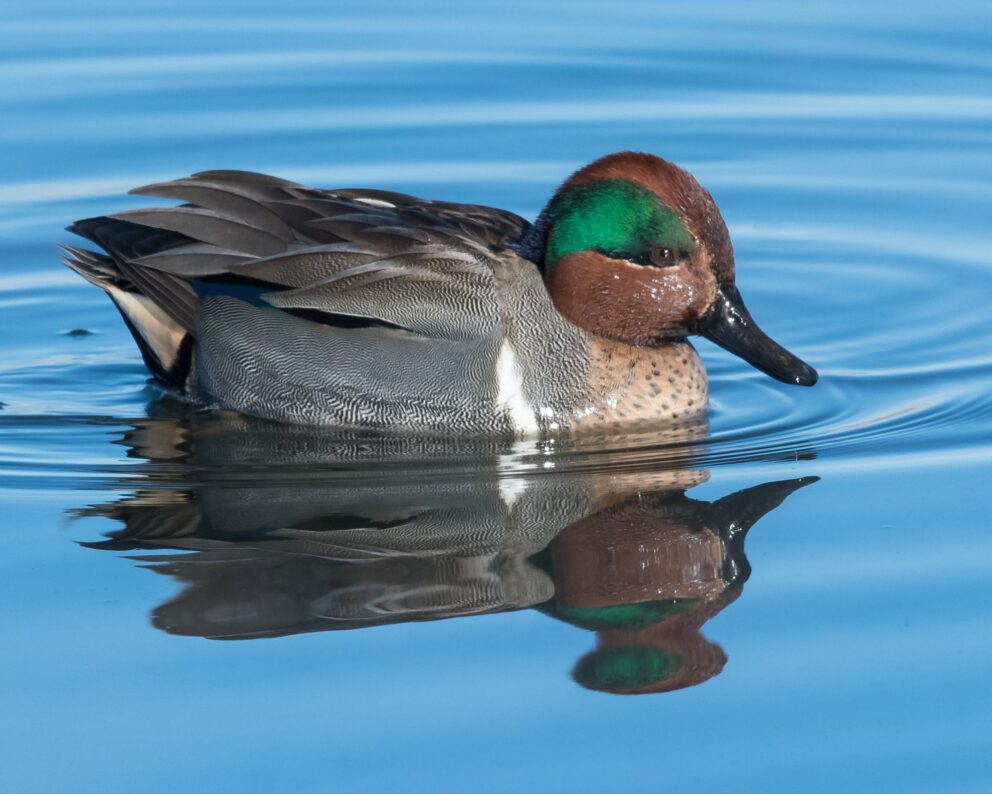- SCIENTIFIC NAME
- Anas carolinensis
- CLASSIFICATION
- Bird
- LIFE SPAN
- 2-10 Years
- SIZE
- 12.2-15.3” | 0.3-1.1lbs
- STATE CONSERVATION STATUS
-
- State Protected
- FEDERAL CONSERVATION STATUS
- Least Concern
- GAME STATUS
- Game
- GAME TYPE
- Waterfowl
- Washoe
- Humboldt
- Pershing
- Churchill
- Mineral
- Lyon
- Douglas
- Carson City
- Storey
- Elko
- Lander
- Eureka
- White Pine
- Esmeralda
- Nye
- Lincoln
- Clark
Habitat & Range
Green-winged Teal can be found in many different types of wetlands. Green-winged Teal are early migrants, and thousands can be seen moving through Nevada in late summer.
- Lakes and reservoirs
- Marsh
- Rivers and streams
Threats
- Drought
- Habitat Loss
- Water Diversion
Natural History
Female Green-winged Teals choose their nest sites usually in a protected area on the ground in a meadow, grasslands, or even in a forest, but always close to water. Females lay between 6 and 9 eggs in their nests and incubates the eggs with no assistance from the male. A couple hours after the ducklings have hatched, they are mobile and able to swim around and follow the female around for food.
Green-winged Teals are dabbling ducks and do not fully submerge themselves while foraging usually. They will dive occasionally to escape predators. These ducks prefer to forage in shallow waters. They are not picky about what they eat and will consume a wide variety of aquatic plants and animals including seeds, grasses, aquatic insects, tadpoles, and crustaceans.
Fun Facts














